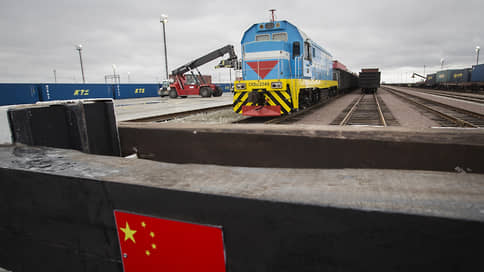Central Asia is shifting to the east
[ad_1]

The average annual GDP growth of the countries of Central Asia (Kazakhstan, Kyrgyzstan, Uzbekistan, Turkmenistan, Tajikistan) over the decade amounted to 3.6%, follows from a review of the Eurasian Development Bank. Along with the increase in the size of the economies, the foreign trade turnover of these countries also grows. Russia remains their largest trading partner, but trade with China is growing at a faster pace, with China already outpacing Russia in terms of direct investment in the region.
The GDP of the countries of Central Asia has increased by an average of 6.2% over the past 20 years, and by 3.6% per year for 10 years. Last year, the five countries combined totaled $347 billion, according to a regional report by the Eurasian Development Bank (EDB). The largest economy of the “five” is Kazakh (GDP size is $197.1 billion in 2021), followed by Uzbekistan ($69.2 billion) and Turkmenistan ($63.4 billion). The economies of Kyrgyzstan and Tajikistan are comparable – $8.5 billion and $8.7 billion of GDP, respectively. The population of the region is increasing annually by 2% (according to the results of last year, it amounted to 77 million people).
The turnover of foreign trade in goods over 20 years has grown six times, last year it amounted to $165.5 billion. The share of Kazakhstan remained the largest (61.4%). Uzbekistan accounts for 22.9% of turnover, Turkmenistan – 7.7%, Kyrgyzstan – 4.4%, Tajikistan – 3.6%. A significant part of exports is still accounted for by mineral products (more than 50%), and almost 16% – by metallurgy products. Uzbekistan, Kyrgyzstan and Tajikistan rely heavily on gold supplies abroad. In addition, Uzbekistan and Kyrgyzstan specialize in the export of food, and Tajikistan specializes in the export of ore concentrates and metals, the authors of the report note.
Russia is already competing in trade not only with China, but also with Turkey, India, and South Korea. With China, the trade turnover of the Central Asian countries over 20 years has increased by more than 25 times (China’s foreign trade has increased nine times during this time). Last year, trade with China amounted to $33.7 billion (20.4% of total trade), while Russia’s turnover with these countries was $35.8 billion (21.6%). Over 20 years, the volume of trade with the Russian Federation has increased by about six times. Kyrgyzstan has the highest share of trade with the Russian Federation (31.6%), and Turkmenistan has the largest share of supplies to China (51%). In the trade of Uzbekistan, the share of the Russian Federation is gradually decreasing (minus 11.8 percentage points over ten years), in the trade of Kazakhstan, on the contrary, it has grown – by 6 percentage points.
The volume of accumulated incoming investments in the Central Asian region from third countries is estimated at $211 billion (61% of GDP against the world average of 47%), more than 70% of investments came from Kazakhstan (the country attracted $151.9 billion). However, apart from resource projects, the region still suffers from a lack of investment, the authors of the report note.
The PRC has invested about $40 billion in Central Asian countries, which is about twice the amount of Russian direct investment. The volume of Chinese direct investments in Kazakhstan reached $21.4 billion, in Uzbekistan – more than $10 billion, in Kyrgyzstan – $4.6 billion, in Tajikistan – more than $3 billion. The volume of accumulated direct investments of Russia in the countries of the region, according to the EDB, is $21, 7 billion, including $11.1 billion to Kazakhstan, $8.9 billion to Uzbekistan, $0.9 billion to Kyrgyzstan, and $0.6 billion to Tajikistan.
Experts note that the countries of the region need to overcome four key structural challenges – this is landlockedness, resource dependence and the low level of development of the financial sector, mismatch in the water and energy sector (unrealized benefits are estimated at 0.6% of the region’s total GDP in agriculture and 0.9% of GDP – in the energy complex), as well as climate change. The EDB believes that the region is among the most vulnerable in terms of the impact of climate change, so its energy sector needs a “green transformation” – the greatest opportunities for the development of renewable energy sources in Kazakhstan.
[ad_2]
Source link






